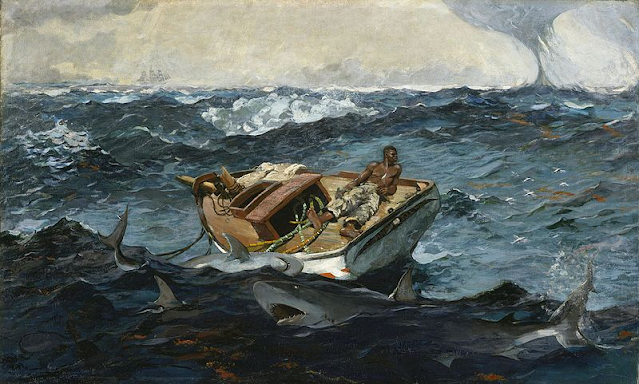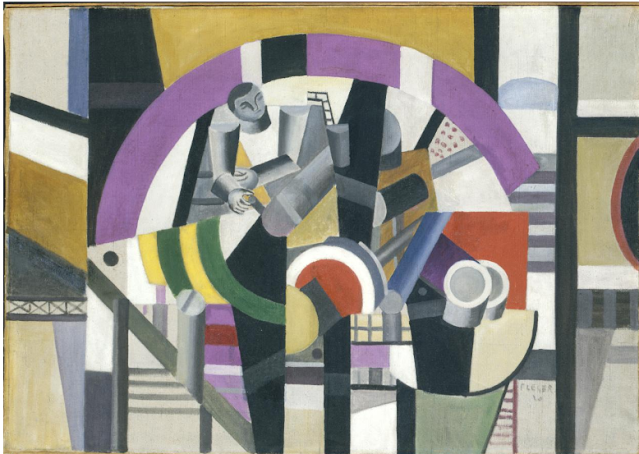Winslow Homer, "The Gulf Stream"
A dear family member sent me an article last week about Winslow Homer (1836-1910) and this painting. The article tossed out several theories of what Homer intended in this work. There was enough discussion of it's meaning while he was still alive, so he wrote an answer, an answer I loved! The thrust of it was disappointment, feeling that between the title he chose, and the image, if the painting was successful, then the meaning should be clear.
As I have often written, we must come to Art from out own feelings, background and experiences. It is possible to interpret this painting in several very valid ways. It is a great work of Art, and has been recognized as one of America's finest paintings. Allowing it to have significance beyond Homer's original intent is just fine, but please do not confuse the two.
To consider Homer's meaning we should examine his title: "The Gulf Stream" Since I do not live or regularly vacation anywhere near the Caribbean Sea, I had to do a little research on exactly what the gulf stream is. I learned it is a very strong current beginning in the Caribbean and traveling in two directions, either towards western Europe or North Africa. Benjamin Franklin was one of the first to actually study and write about this dangerous current, thereby warning sailors of its existence.
"The Gulf Stream" was painted late in Homer's life, 1899 and at a time when, as a mature artist, he was facing his own mortality. In previous years he had frequently vacationed in the Caribbean and done many watercolors of native men at sea. Other work from this late period shows marine families experiencing the perils of the sea, but off the coast of Maine. Survival against the elements of nature was Homer's predominate theme at this time in his life.
The composition of our painting is very simple. The bottom strip is very dark sea with sharks, the center is the turbulent sea, and the top strip is the storm, probably a hurricane. Then, center stage is the boat and sailor. The condition of the boat, with the storm in the distance, indicates this poor guy has gone through hell and so far, has survived. Our only indication that he will live another day is the faint outline of a larger ship on the horizon, left. Exciting, dramatic image.
"The Gulf Stream" is an oil on canvas created in 1899. It is part of the permanent collection of the Metropolitan Museum of Art, New York City. It measures 28 inches high, 49 inches long.
Make Art a part of your life, it's a beautiful thing to do.




I love paintings of water, and especially the drama in this one. I see a sailor caught between two opposing threats for survival. I would imagine he is no stranger to this kind of weather and is a very skilled seaman. I wonder if he is fearful or just resigned to his predicament. He is apparently very strong and hanging on for dear life. His boat appears in a path of light blue water. Is that a calm spot to give him hope? Homer is masterful at painting the turbulence. It begs us to anticipate what will happen next. I wonder if a gulf stream is the same as a waterspout. I must research.
ReplyDeleteGreat comments, Char, as always. I am glad you wrote about the sailor and I totally agree. When I wrote my article I kept wondering about why the sailor is looking off to our right, especially when the boat that could save him is on the horizon to the left. But, your statement about him possibly being fearful or resigned to his predicament seems the best answer. It does seem Homer wants us to understand this experienced sailor is now caught up in the Gulf Stream and his boat is so broken, he has little means of escaping it's pull. Powerful, wonderful painting.
Delete